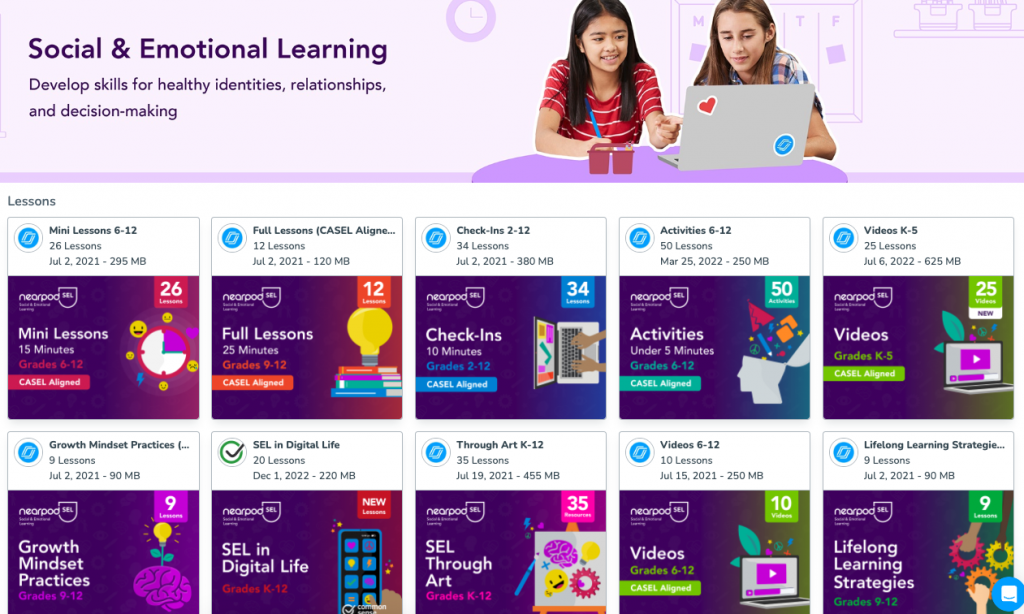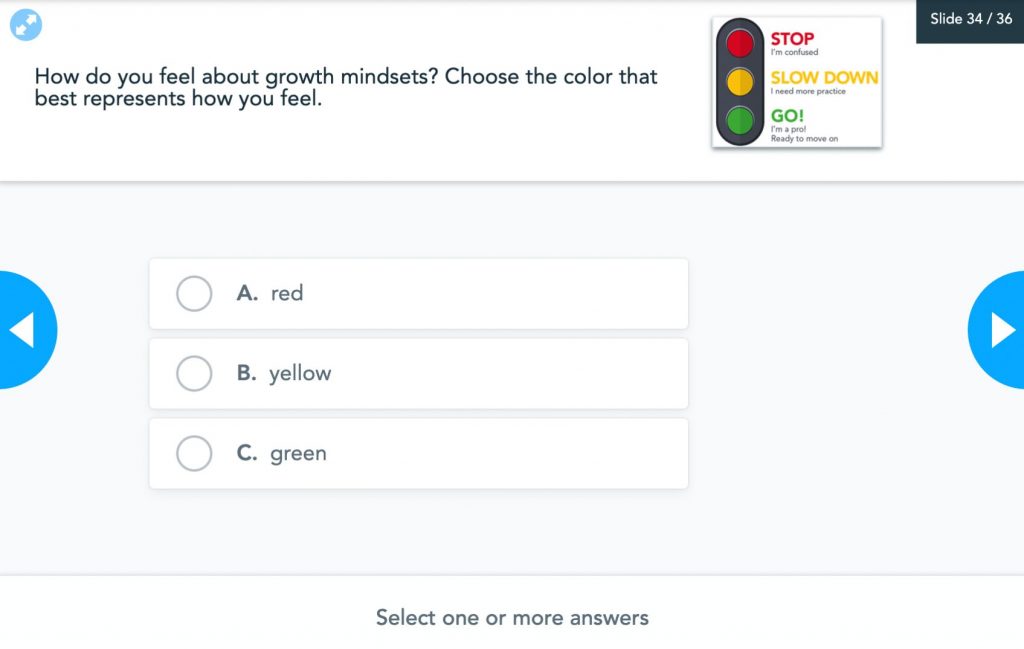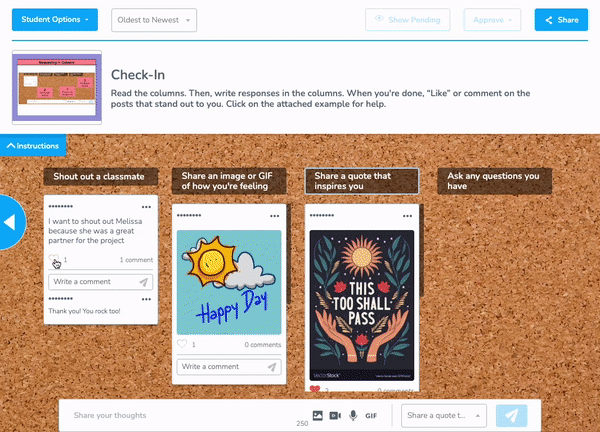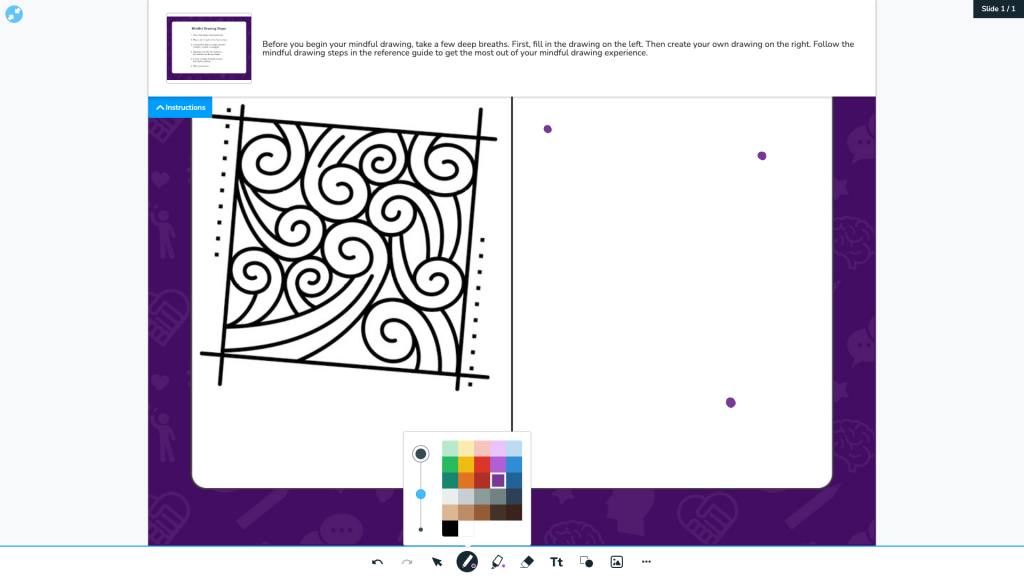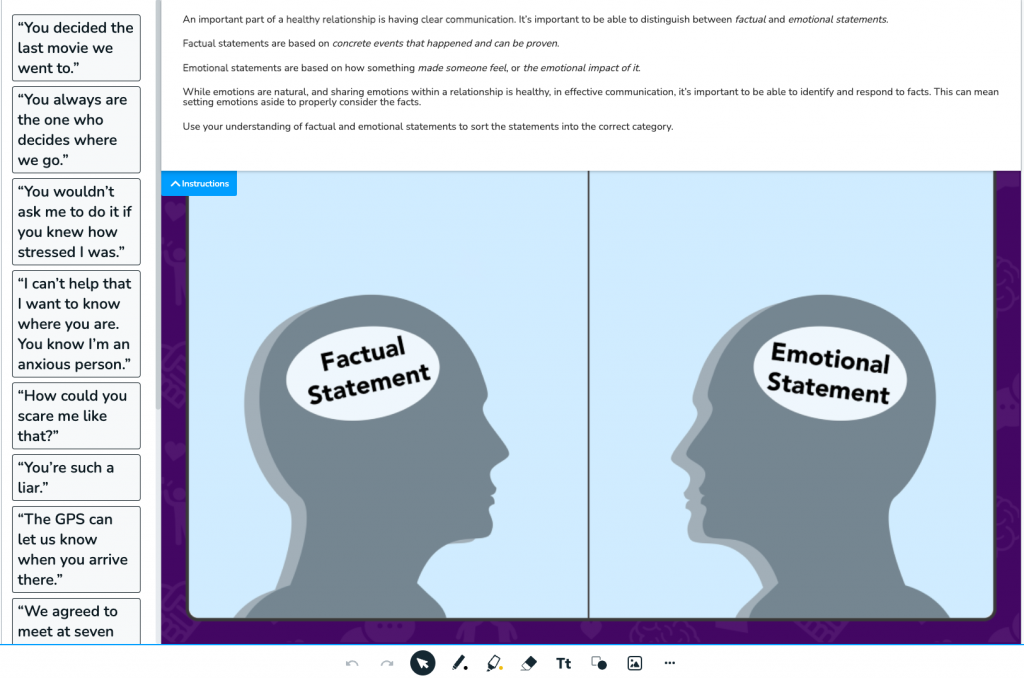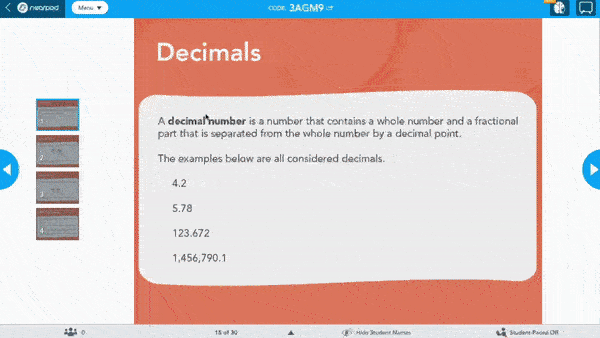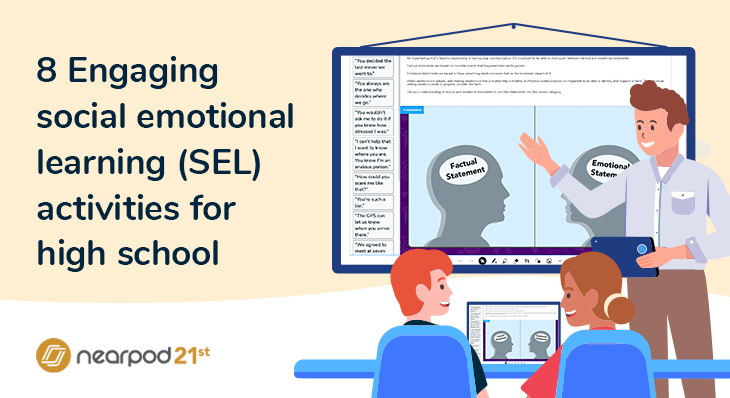
8 Engaging social emotional learning (SEL) activities for high school
Social emotional learning (SEL) is a lifelong endeavor through which we challenge ourselves to find success in life, whether that be personally or professionally. While an actual definition of SEL can vary, research has shown that SEL supports academic performance, healthy relationships, career preparedness, and mental health, just to name a few of the benefits. CASEL, a leading nonprofit in the SEL space, offers a framework that centers on five core competencies: self-awareness, self-management, social awareness, relationship skills, and responsible decision-making.
SEL can help all young people and adults thrive personally and academically, develop and maintain positive relationships, become lifelong learners, and contribute to a more caring, just world.
CASEL.org
Despite recent backlash, states and schools continue to adopt SEL policies and programs; in fact, all 50 states now address SEL in some manner within their frameworks or standards, according to EdWeek. While SEL should begin early—as Robert Fulghum wrote, “Everything I need to know … I learned in kindergarten”—such skills and attitudes need to be practiced throughout school and beyond into adulthood. But how does one weave SEL activities for high school into the curriculum?
How to make social emotional learning engaging for high school students
It can also be hard to find time during the day to teach social emotional learning in high schools. Plus, high schoolers can be a tough audience to reach and engage as they constantly strive to become more and more independent. So, SEL activities for high schoolers must be authentic and relevant to their everyday lives. High schoolers will want to see the direct connections to their real world, whether that be inside or outside of school. They will want the elbow space to express themselves, at times assert themselves, and challenge the “norm” as they form their own perspectives on the world around them. Social and emotional learning can provide high school students with the skills and attitudes to support goal setting, a growth mindset, grit, critical thinking, and healthy relationships.
Nearpod’s 21st Century Readiness Program
Nearpod’s 21st Century Readiness Program provides an easy way to integrate SEL practices like positive interactions, gratitude, and reflective moments into daily learning to help create safe, inclusive, and effective classroom environments. It has over 400 lessons, videos, and activities, including high school SEL activities.
This program equips students with the skills and knowledge for success in and beyond the classroom. It includes premade quality lessons that follow scope and sequence for topics related to social emotional learning, digital citizenship, college and career readiness, and financial literacy.
If you don’t have access to the program, you can still use Nearpod’s interactive features for free to weave SEL skills across the curriculum. These tools promote active learning strategies, which in turn promote social and emotional wellness within and among students. These SEL activities for high school students, plus the interactive tools, provide you with many ways to support your instruction.
New to Nearpod? Teachers can sign up for a free Nearpod account below to access these resources, interactive activities, and engaging lessons. Administrators can schedule a call with an expert to unlock the full power of Nearpod for schools and districts.
8 Engaging social emotional learning (SEL) activities for high school
1. Ask questions
In fact, ask lots of questions! High schoolers often are figuring out their place and purpose in the world. They are forming their opinions and looking at society from different perspectives. To help gauge students’ moods, check out activities like Share Your Mood. In this Collaborate Board activity, students “like” a color based on their feelings and share how they feel. They can comment on posts as well. Start each morning with a quick check-in to assess their readiness to learn.
Consider using Nearpod’s Poll to identify commonalities and differences in their perspectives on a current event to kick off meaningful morning discussions. These social emotional check-ins for high school students provide a moment for reflection, which is key for students of all ages—but especially powerful for high schoolers who are seeking to form their identities and assert themselves as unique individuals.
2. Encourage an exchange of ideas
P21 emphasizes that the 4Cs—critical thinking, collaboration, communication, and creativity—are the core skill sets needed in today’s society and workforce. Nearpod’s Collaborate Boards encourage just that, as students can share their thoughts and opinions on a shared platform, using care in how they express and word their ideas. They can build off of one another with a “Yes, and …” mindset. At its core, Collaborate Boards build teamwork. Such a tool helps develop competencies around self-awareness, social awareness, and relationship building. Explore more ways Nearpod supports the 4Cs here.
Here are some social emotional learning activities for high school you can use:
- Build community using Check-Ins with Collaborate Board
- Connect with students using Conversation Starters
- For exchanging English Language Arts ideas, use All About Fictional Characters
- For collaborating and discussing social studies topics, use Running for President
3. Make space for doodling
It may sound obvious, but self-expression is especially important for high schoolers. They need platforms and tools to share and hone their voice. When encouraged to doodle, learners are empowered with yet another (non-verbal) way to share their ideas. Even the smallest doodle is a form of art, and such creative expression supports reflection, empathy building, and self-awareness. Nearpod’s interactive Draw It tool permits learners to sketch out their ideas or work through a problem as a means of expression.
Imagine a high schooler making visual notes or mapping out their ideas. In turn, visual learners will appreciate seeing ideas expressed in another medium, helping to ease communication between individuals.
Here are some activities you can use:
- Mindful Drawing: In this 9-12 SEL Draw It activity from Nearpod’s 21st Century Readiness Program, students will create mindful drawings while building social and emotional learning skills, such as reflection and communication.
- Sequence of Events: Students will use Draw It to sequence a series of events using a graphic organizer.
- Making Connections: Use Draw It to brainstorm characteristics, synonyms, attributes, or applications for a word using a graphic organizer.
- Argument from Evidence: Students can use an argument from an evidence chart to complete an activity.
4. Promote trial and error
Use Nearpod’s Drag & Drop tool to encourage your students to try, try again. They can drag and drop labels, sort categories, and sequence events to check their understanding of a particular concept. These activities can be quick checks for understanding, helping learners test their skills while reinforcing concepts across the curriculum. Trial and error also encourages a growth mindset and the notion that hard work pays off! Perseverance, determination, and grit are skills that SEL promotes and that have far-reaching effects beyond the four walls of a classroom.
Consider using some of these social emotional learning activities for high school:
- Emotions & Communication: In this 9-12 SEL Drag & Drop social awareness activity from Nearpod’s 21st Century Readiness Program, students recognize the importance of clear communication by learning the difference between factual and emotional statements.
- Identifying Congruent Triangles: In this 9-12 Math Drag and Drop activity, students use triangle congruence theorems to identify congruent triangles.
- Photosynthesis & Cellular Respiration: In this 9-12 Science activity, students will practice identifying the reactants and products of photosynthesis and demonstrate how they compare to those of cellular respiration with a Draw It activity.
5. Ask “Why?” 5 times
When it comes to problem-solving, design thinking takes a human-centered approach. In the empathy phase of need-finding, one is encouraged to ask “Why?” five times. Why? Well, it’s not to drive another crazy with a five-year-old’s style of persistent questioning. Rather, it is to drill down to understanding that nugget of need—one that is unique, identifiable, and core to an individual. Through Nearpod’s Open-Ended Questions, you can challenge your students to use higher-order thinking to analyze, evaluate, reflect, and create. Such critical thinking skills underscore social and emotional learning for high schoolers. Practice these skills using our digital wellness lessons in partnership with Common Sense.
6. Provide continuous feedback
With Nearpod’s real-time data, you will have group and individual data at your fingertips. Use this data to monitor your students’ progress. This is essential to social emotional learning curriculum in high school. You can lean on these insights to provide immediate support to keep students from cementing bad habits. Consider using small-group work, peer-to-peer learning, and mini-conferences to keep the instruction individualized as needed. To personalize feedback even more, you can use Nearpod’s Interactive Videos or turn on audio submissions to facilitate an exchange when you’re not face-to-face.
7. Journal
Make time in morning meetings or advisory groups for students to journal. You can use Neapod’s Open-Ended Questions to add a prompt for students to respond to. You may want to offer a few options to promote “voice and choice” on daily or weekly reflection prompts. Students can reflect on their growth with SEL lessons for high school, like Reflecting on Decisions (From Nearpod’s 21st Century Readiness Program), while looking forward to future goals with FLO: Mindfulness & Meditation. Journaling is a way to encourage individuals to hone their writing voice too. Challenge their perspectives and let them share their opinions (which may change daily) and express themselves as they find their work through the day or week.
8. Take brain breaks
Last, but not least, find ways for your high schoolers to take brain breaks, relax their minds, and invigorate their bodies. Nearpod offers Brain Breaks videos (available to educators with access to the 21st Century Readiness Program), which research shows help students ease feelings of stress and refocus on a task. Choose between calming or energizing videos depending on the student’s or classroom’s mood. Pepper 3- to 5-minute breaks after every half hour or so of instruction. When teaching social emotional learning for high school students, such breaks can reduce feelings of being overwhelmed and provide moments for reflection and introflection. True brain breaks are not merely a pause but a way for the mind to internalize what was just learned.
Start using Nearpod for building social and emotional learning skills
While high school SEL can be taught via individual lesson plans, during dedicated periods, these skills are best addressed and reinforced across the curriculum. Choose from over 100 premade SEL activities that use Nearpod’s interactive features such as Polling, Draw It, Open-Ended Questions, and Drag & Drop. These meaningful social emotional learning activities for high school can be utilized as a bell ringer, an exit ticket, for extra practice, or as homework. Help your students embrace and own their social and emotional learning journeys in high school so that they continue healthy habits of mind to find success inside and outside of the classroom.
New to Nearpod? Make sure you’re signed up to access these lessons and activities!
Teachers can sign up for free below to access and create interactive lessons. Administrators can schedule a call with an expert to explore Nearpod’s 21st Century Readiness Program and unlock the full power of Nearpod for schools and districts.
Click here to learn more about Nearpod’s 21st Century Readiness Curriculum Program
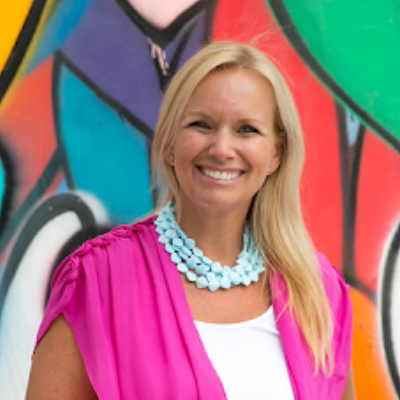
Darri Stephens is a dedicated LX (learning experience) designer, passionate about creating quality content and programs for kids, families, and educators. With MAs in Education from both Harvard and Stanford, and work experience at best-in-class ed tech organizations including Wonder Workshop, Nickelodeon, and Common Sense Education, she is steeped in the design thinking process and committed to agile and iterative project management, which has resulted in multi-award-winning programs and products.
